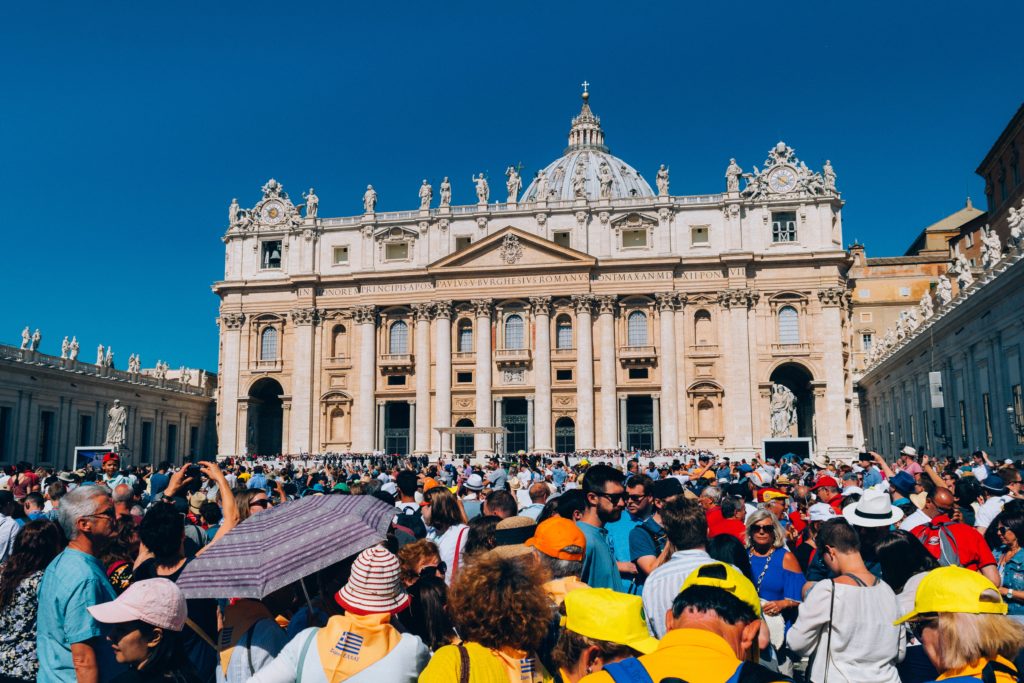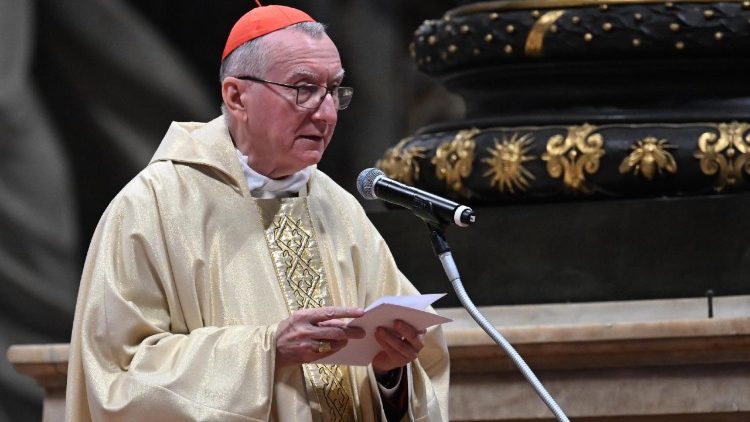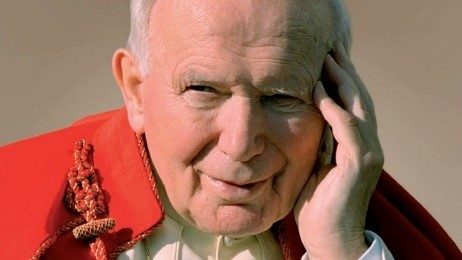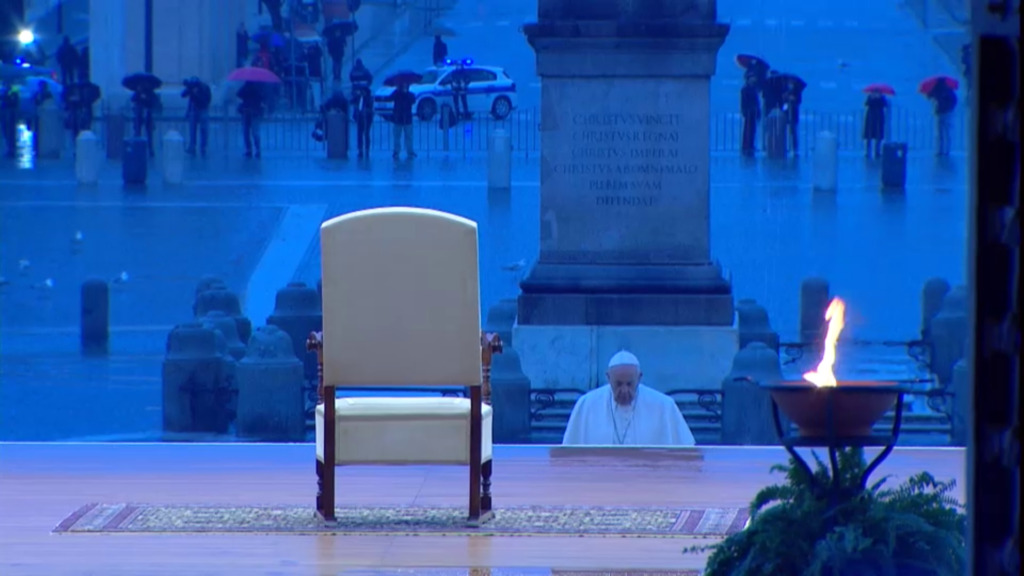Pope Promulgates New Apostolic Constitution on Roman Curia
Will Enter Into Force on June 5, 2022, the Solemnity of Pentecost

On the Solemnity of Saint Joseph, Pope Francis promulgated the new Apostolic Constitution on the Roman Curia, entitled “Praedicate evangelium“. The text, which governs the Roman Curia, will enter into force on June 5, 2022, the Solemnity of Pentecost.
The Constitution marks the outcome of a lengthy listening process that began with the General Congregations that preceded the Conclave of 2013. The new Constitution replaces “Pastor bonus“, which Pope St. John Paul II promulgated on June 28, 1988, and in force since March 1, 1989, and consisting of 250 articles.
On Monday, March 21, at 11:30 a.m., Praedicate evangelium will be presented at the Holy See Press Office by Cardinal Marcello Semeraro, Prefect of the Congregation for the Causes of Saints, Bishop Marco Mellino, Secretary of the Council of Cardinals, and Jesuit Father Gianfranco Ghirlanda, canonist and emeritus professor at the Pontifical Gregorian University.
The text, as mentioned, is the result of lengthy collegial work, which took its cue from the 2013 pre-conclave meetings, and involved the Council of Cardinals with meetings from October 2013 to last February, taking place under the guidance of Pope Francis and with various contributions from the local Churches around the world.
It should be noted that the new Constitution calls for a path of reform that has already been almost entirely implemented over the past nine years, through the mergers and adjustments that have taken place and have led to the creation of new dicasteries.
The text emphasizes that “the Roman Curia is composed of the Secretariat of State, the Dicasteries and the Offices, all of which are legally equal.”
Among the most significant developments in this regard contained in the document is the unification into the Dicastery for Evangelization of the former Congregation for the Evangelization of Peoples and the Pontifical Council for the New Evangelization. The two heads of these offices both become pro-prefects because the prefecture of this new department is reserved to the Pope. In fact, the Constitution reads: “The Dicastery for Evangelization is presided over directly by the Roman Pontiff.”
The Dicastery for the Service of Charity, represented by the Office of Papal Charities, is then established, which thus assumes a more significant role in the Curia.
“The Dicastery for the Service of Charity, also called the Apostolic Elemosineria, is a unique expression of mercy and, beginning with the option for the poor, the vulnerable and the marginalized, carries out around the world the work of assistance and help to them in the name of the Roman Pontiff, who in cases of particular privation or other necessity, personally arranges for the aid to be given.”
The Apostolic Constitution begins by presenting in the following order: the Dicasteries for Evangelization, the Doctrine of the Faith, and the Service of Charity.
Another unification concerns the Commission for the Protection of Minors, which becomes part of the Dicastery for the Doctrine of the Faith, continuing to operate with its own norms and having its own president and secretary.
A fundamental part of the document is that which regards general principles. The preamble recalls that every Christian is a missionary disciple.
Fundamental among the general principles is the designation that everyone – including the lay faithful – can be appointed to roles of government in the Roman Curia by virtue of the vicarious power of the Successor of Peter.
The Constitution also underscores that the Curia is an instrument at the service of the Bishop of Rome also for the benefit of the universal Church and therefore of the episcopates and local Churches.
“The Roman Curia does not place itself between the Pope and the Bishops; rather, it places itself at the service of both in ways that are proper to the nature of each.” Another significant point concerns spirituality: the members of the Roman Curia are also “missionary disciples.”
Synodality in particular is highlighted as an ordinary way of working for the Roman Curia, a path already in place, and to be developed more and more.
Other aspects contained in the document include emphasizing the definition of the Secretariat of State as “papal secretariat”, the transfer of the Curia Personnel Office to the Secretariat for the Economy (SPE), and the indication that the Administration of the Patrimony of the Apostolic See (APSA) must carry out its work through the instrumental activity of the Institute for the Works of Religion.
The Constitution also establishes that for clerics and religious serving in the Roman Curia, the mandate is for five years and may be renewed for a second five-year term, at the end of which they return to their dioceses and communities of origin.
— With Sergio Centofanti, reprinted from Vatican News
Related

On April 5 and 6, pilgrims from around the world will celebrate the Jubilee for the Sick
Exaudi Staff
04 April, 2025
4 min

John Paul II: The Tireless Pilgrim Who Continues to Inspire the World
Exaudi Staff
03 April, 2025
2 min

Mass in Commemoration of the 20th Anniversary of the Death of John Paul II
Exaudi Staff
01 April, 2025
1 min

Five Years After Statio Orbis: Hope in the Midst of the Storm
Exaudi Staff
27 March, 2025
2 min
 (EN)
(EN)
 (ES)
(ES)
 (IT)
(IT)

